“The Matrix Resurrections” Co-Writer David Mitchell On Conjuring a Meta Mind-Blower With Lana Wachowski
The Matrix changed everything in 1999 when it set the bar in Hollywood for mind-twisting science fiction expressed through next-level visual effects. Written and directed by the Wachowski siblings, The Matrix and its two sequels introduced “Bullet Time” and the “Red Pill/Blue Pill” to the popular imagination, merging art and commerce to the tune of $1.6 billion in domestic box office. Now, The Matrix Resurrections (in theaters and streaming on HBO Max now) updates the franchise with Keanu Reeves returning as the heroic Neo. [Mild spoiler alert] Haunted by his past, Neo, now a bored video game designer with three “Matrix” games under his belt, yearns to re-unite with soul mater warrior Trinity (Carrie-Ann Moss). Aided by new acolytes, he re-enters the virtual reality realm and all hell breaks loose.
Lana Wachowski got inspired to revive the franchise about four years ago when she woke up in the middle of the night while visiting her ailing parents in Chicago. “In the grief that I was experiencing with my parents dying, my brain wanted to imagine a story that would be soothing,” Wachowski said in a statement. “And so, these two characters that were dead, my brain just resurrected them and brought them to life—Neo and Trinity. I immediately responded to this hook of an idea, went downstairs, and started writing it.”
To flesh out the screenplay, she enlisted kindred spirits David Mitchell, who collaborated on the Wachowski’s adaptation of his “Cloud Atlas” novel, and Sense8 contributor Aleksander Hemon.
In an email from his home in Ireland, Mitchell discussed the trio’s creative process and unpacked some of the ideas that drive The Matrix Resurrections.
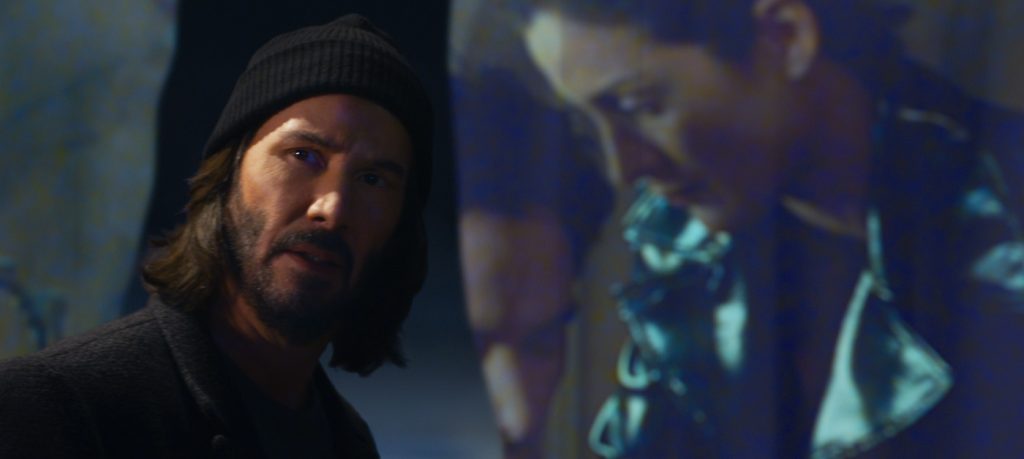
Your script has game designers talking about how their parent company Warner Bros has been pressuring Neo to create a fourth Matrix game. It’s unusual for movie characters to reference actual movie studios in this way. How did this idea surface?
The way I remember it, the “meta” idea of acknowledging the Matrix trilogy was there from the very beginning, when Lana first approached Aleksander Hemon (whom I only know as Sasha, so if it’s okay I’ll do refer to him that way here, too) and me with her ideas for a fourth film. Of course, it’s “meta” with sidespin: the previous Matrix incarnations are video games, not films. It’s in the public realm that Warner Bros was interested in exploring another Matrix outing for some years, so the Warner Bros reference is a case of art imitatingl ife imitating art. (And evidence that Warner Bros has a sense of humor.)
The script incorporates themes of aging and memory, with Neo being challenged to look at his past adventures and reflect on what it all means. Were you, Lana, and Sasha interested in developing mature heroes from the get-go?
Certainly. The writers and principal actors are all in our fifties. To pretend the last 20 years haven’t happened, to not use the passage of time as a moving part in the narrative, would have been a wasted opportunity. Aging and memory are universal, intriguing subjects but unusual in a high-concept SF action movie. Especially the ‘aging’ half. By foregrounding these subjects, we got to use scenes from the trilogy as the characters’ memories – memories which we, the viewer, also share. We were all there in a local multiplex back then, watching this movie from a weird, prescient future.
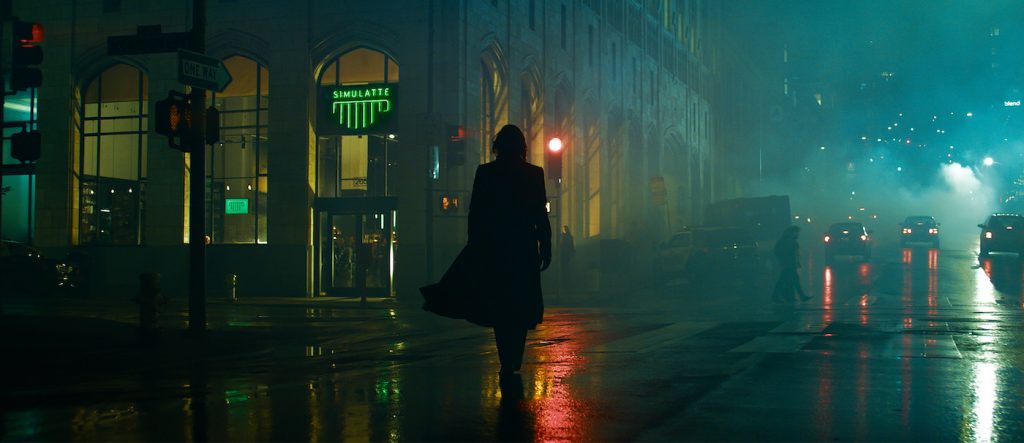
You worked with Lana and Lilly Wachowski when they adapted your novel Cloud Atlas. This time, you’re entering a pre-existing universe created by someone else. What were the challenges of getting into this storytelling space, as opposed to starting with a blank page?
“Challenges,” if you’ll allow me to be picky, implies too much in the way of blood, sweat, and tears. Coming into these pre-existing universes, learning about their lore, layers, origins and possible futures was a creative pleasure. Naturally, you leave your ego at the door and understand you’re a “guest co-creator” rather than the Absolute Dictator of the world, but – when the company and chemistry are right – that’s really not a challenge. It’s a holiday from a novelist’s omnipotence where you do get to decide every last thing. . . because there’s nobody else in the room.
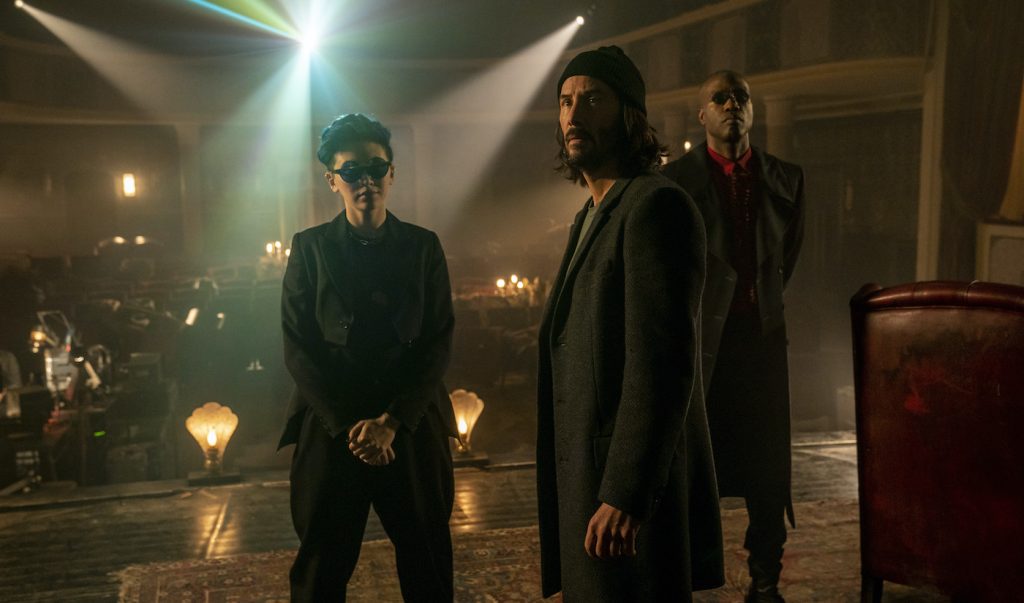
But with Resurrections, there are three of you in the room. Was there a division of labor where one of you would focus on one aspect of the story while another might specialize in, for example, dialogue, or technology expertise, or plot or action?
Formally, no; informally, probably. I’m an incurable dialogue nerd, so I guess I test the others’ patience on matters of register, syntax, and voice. (Though the actors often find new nuances and functions in the lines.). Lana is a seer of visions, plot twists, trapdoors, and bridges. When she’s on a roll, she generates idea after idea after idea. (I’m usually the scribe trying to get them onto cards. More than once I’ve had to say, “Will you just please press PAUSE for a moment?”). Sasha’s perhaps the most rigorous and methodical of the three of us, the One Least Likely to Get Carried Away. Sasha tests proposals and lines, sometimes to destruction, so anything that gets past him is pretty battle-worthy. He’s formidably erudite. His secret superpower is philosophy. This thumbnail sketch is very sketchy, and one of the pleasures of working together is sensing [how] the others’ approach to narrative rub off on me.
Resurrections features so many story strands in terms of the plot. As a practical matter, how did the three of you structure the narrative? Did you use whiteboards? Index cards?
Index cards on tables, each card being a scene or a beat or a snatch of dialogue whipped up during the workshopping stage.
The workshopping—you did that in person?
Most of the first draft was written during a month together at Inchydoney Hotel in West Cork over December-January of 2018/2019. We carried on concocting scenes via Zoom until Spring, then met again in San Francisco.
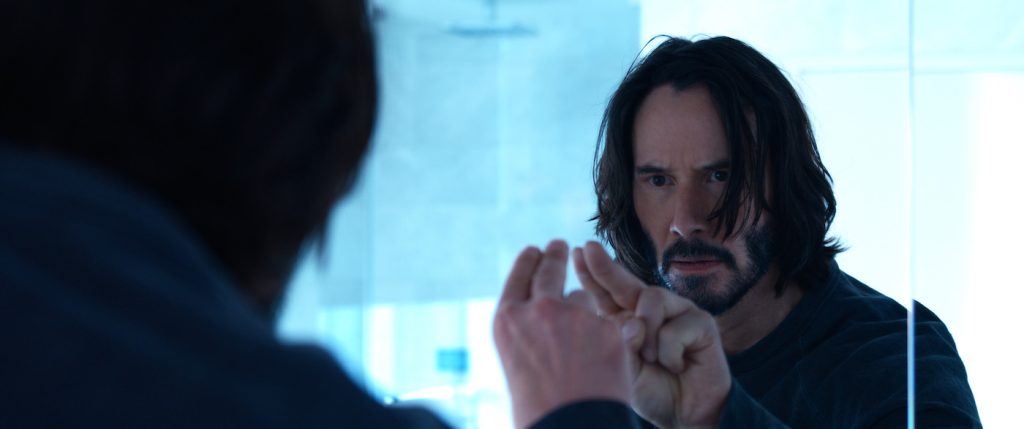
Keanu Reeves as Neo of course anchors the Matrix world. Did you guys give him a sneak peek of the script-in-progress and if so, what was his reaction?
Yes, Keanu was around during our week in San Francisco. He’s perceptive, he’s a reader (of people as well as books), he’s Neo in a singular way, and he’s made a successful career out of bringing scripts to life on screen. He read lines, read scenes, and offered encouraging feedback. Not to have listened very closely to his thoughts would have been foolish and wasteful.
Resurrections deals in part with the Matrix trilogy’s impact on the culture over the years. In your case, when was the first time you saw The Matrix and what was your gut reaction at the time?
In Hiroshima, in a cinema on the 10th floor of a department store, with a friend, and rarely has the phrase “It blew me away!” been more apposite. My friend and I left, feeling drunk – on art and ideas as well as adrenalin. Bullet time: so damn beautiful. The idea that virtual reality is, in fact, reality – kapow! What a photon torpedo of an idea! I figured my reaction was hardly unique when, the following week, several of my college students turned up to class sporting cloak-length leather coats.
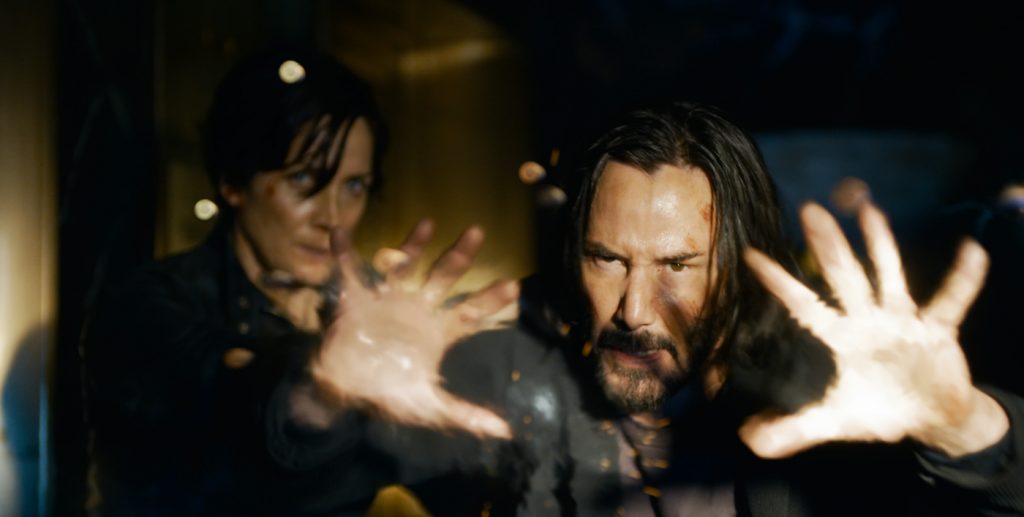
This fourth Matrix includes a lot of callback sequences originally filmed for the first three movies: Iconic images, iconic sequences, iconic dialogue. With so much to draw from, how did you pick and choose which scenes to incorporate and which to exclude?
We discussed the idea of clips from the trilogy forming flashbacks – often of a PTSD-type nature – during the first draft stage, but exactly which ones were used, and why, were decisions made by Lana in the editing suite.
The first Matrix anticipated many aspects of our tech-dominated society. Two decades later, which developments in technology did you want to underscore in Resurrections?
I’ve typed and deleted longer answers to this because my reply kept looking like a checklist that we didn’t really compile. Twenty-first-century tech got into the script because it got into the writers. However, I do recall long conversations – that we still have – about Artificial Sentience. Yes, we’ve had chess programs that can defeat the best human grandmaster since the late 1980s – but what about a program that actually knows it is playing chess?
Lana Wachowski is widely regarded as one of the most visionary filmmakers of our time. What’s she like to work with?
I’ve always rolled my eyeballs at those “Making Of” special features where collaborators praise their directors to the skies and beyond while I’m thinking “Well, you would say that wouldn’t you?” But here I am about to do it. Lana Wachowski is an ideas engine, an architect of narrative, an acute listener. She can see past what people say to what people mean. She is a generous, thoughtful, and egoless collaborator. I can serve up a half-baked idea and ten minutes later it is served back, baked to perfection with a sauce on the side. She’s got a strong comic sense, too, both as a writer and a human. Humour is a kind of wisdom. Lana embodies that.
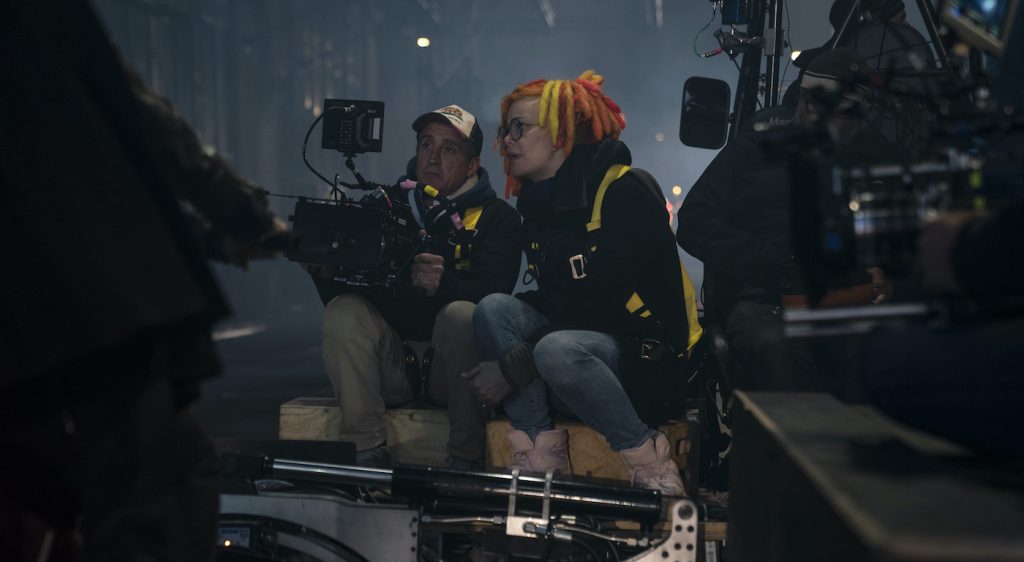
Did you guys ever get stumped over how the story should move forward?
Yes, constantly: writing is getting stumped, and getting unstumped. The more intractable the stump, the more original your plot and characters are. The more audacious the act of escapology required to overcome the stump, the more audacious and unexpected and cliche-busting the scene. As Chet Baker doesn’t quite sing, ‘Let’s Get Stumped.’ How to do it? Talk with your collaborators. Listen. Approach the stump from a different angle. Go for a walk.
For more on The Matrix Resurrections, check out these stories:
“The Matrix Resurrections” Early Reactions: A Bold, Irreverent, Vividly Personal Head Trip
Red Pill Time: “The Matrix Resurrections” Reveals Tons of New Images
A New “The Matrix Resurrections” Clip Reveals Trip Down Memory Lane
Featured image: Caption: (L-r) KEANU REEVES as Neo/ Thomas Anderson and CARRIE-ANNE MOSS as Trinity in Warner Bros. Pictures, Village Roadshow Pictures and Venus Castina Productions’ “THE MATRIX RESURRECTIONS,” a Warner Bros. Pictures release. Photo Credit: Courtesy of Warner Bros. Pictures



